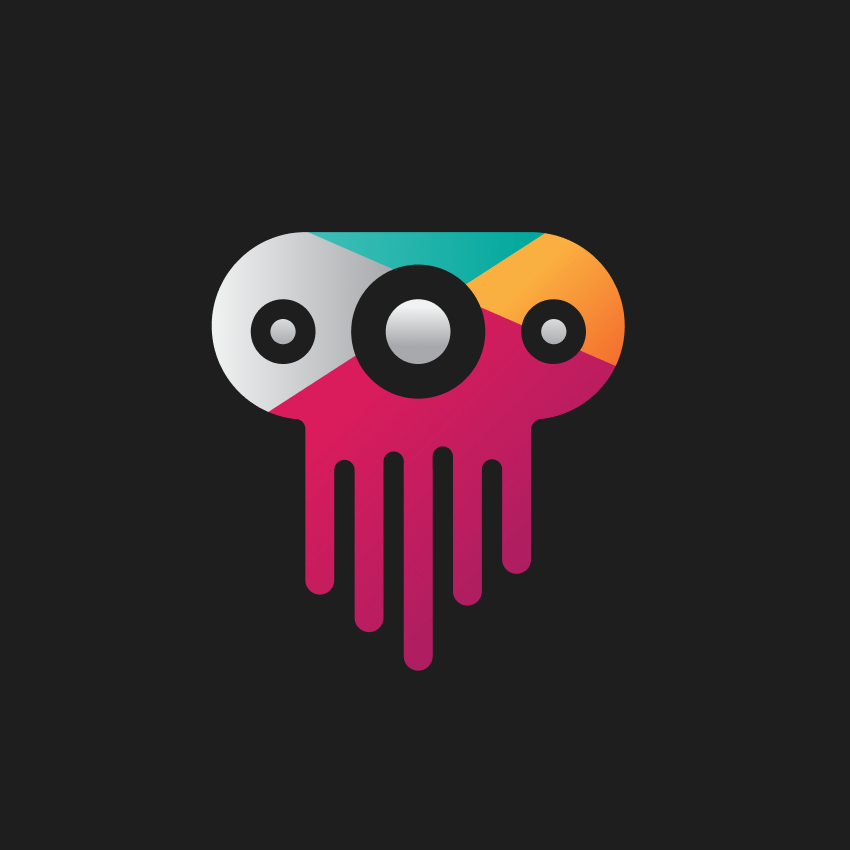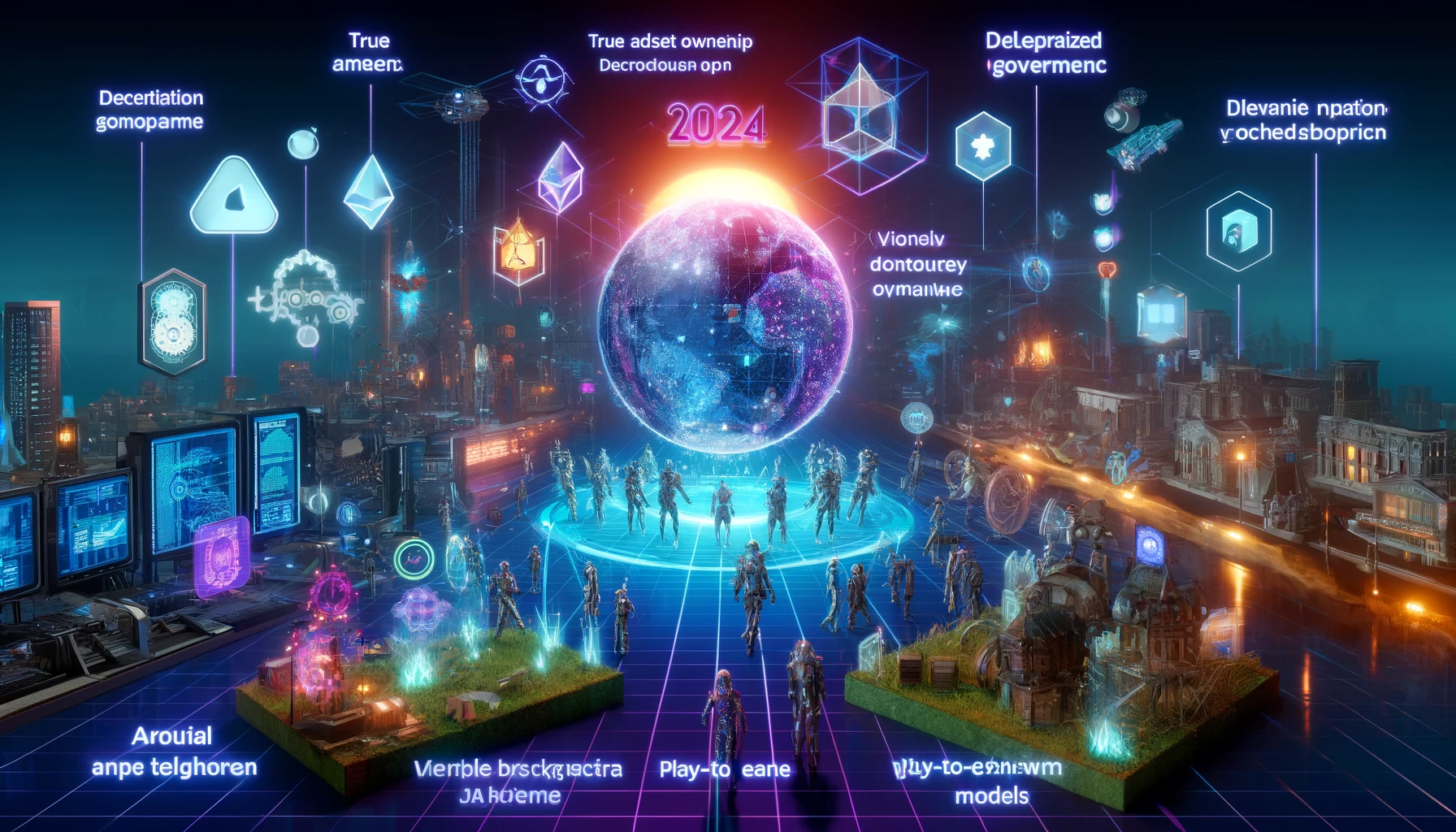Imagine a gaming era where you genuinely own your virtual assets. Welcome to the digital renaissance of Web3 gaming in 2024. As blockchain technology merges with interactive entertainment, the concept of gaming is being completely redefined. This guide will help you navigate the complexities of Web3 gaming, exploring its evolution and potential to revolutionize the industry. Ownership, secure transactions, and enhanced gameplay through smart contracts are just the beginning. Prepare to dive into the world of Web3 gaming, where technology and creativity unite to shape the future of interactive entertainment.
What is Web3 Gaming?
Web3 gaming is the fusion of decentralized blockchain technology with the world of video games. Unlike traditional games controlled by central authorities, Web3 games operate on a decentralized network, ensuring transparent and secure gameplay. This new era of gaming brings true ownership of in-game assets, allowing players to own and trade items such as weapons, land, and characters as digital assets—often represented as non-fungible tokens (NFTs).
Blockchain networks support peer-to-peer transactions and smart contracts, eliminating the need for intermediaries. This means that every virtual item you acquire in a Web3 game truly belongs to you and can be traded or sold securely and transparently. The rise of play-to-earn (P2E) models is a key feature of Web3 games, where players earn cryptocurrencies for their time and skills. Additionally, decentralized governance allows players to participate in decision-making processes affecting the game universe.
Understanding the Evolution of Gaming
As we approach 2024, Web3 gaming is a pivotal force in the gaming industry's evolution. Building on the rich history of video games, Web3 games introduce true in-game asset ownership through NFTs. These assets can gain real-world value, blending digital and physical economies. This convergence reshapes the gaming ecosystem, offering both strategic gameplay and economic opportunities. Web3 games empower players with tokens and digital assets that hold value inside and outside the game, setting a new standard for immersive experiences.
Top Web3 games in 2024 are pushing boundaries by leveraging blockchain's potential to create new dimensions where gameplay is both entertaining and innovative. These games are not just for fun but also provide avenues for creativity, property rights, and potential revenue generation.
Exploring the Potential of Web3 Technology in Gaming
Web3 technology is unlocking new potentials in gaming, thriving on the interoperability of blockchain. This enables the movement of in-game assets between different platforms, revolutionizing the concept of digital possession. By 2024, the Web3 blockchain gaming market is growing rapidly, indicating strong interest from players and developers. Smart contracts facilitate proof of ownership and complex in-game interactions, providing a playground for innovation beyond conventional norms.
For developers, Web3 technology offers endless opportunities to create new genres and gaming experiences that combine entertainment with tangible asset accumulation. The decentralized nature of Web3 gaming also allows for self-sustaining economies where user control is paramount.
Benefits of Web3 Gaming
Web3 gaming redefines gameplay incentives, allowing players to monetize their gaming journey—from in-game achievements to user-generated content. Blockchain technology ensures that in-game assets can be earned and converted into real-world value. Players are integral contributors to the game's economy and governance, often through decentralized autonomous organizations (DAOs). This ensures clarity and security for digital assets and fosters vibrant, connected gaming communities.
In summary, Web3 gaming is a revolutionary shift in the digital landscape, benefiting players, developers, and the broader gaming industry. As we look ahead to 2024, the fusion of strategic gameplay, digital ownership, and virtual economies in Web3 games promises an exciting future for gaming.
Game Assets in Web3 Gaming
Game assets in Web3 gaming are significantly enhanced by blockchain technology, enabling true ownership of digital items like weapons, characters, and virtual land. These assets, represented as NFTs, are protected by smart contracts. Unlike traditional games where items are licensed, Web3 assets are owned outright by players, allowing them to trade, sell, or use their assets freely.
The secure, decentralized nature of blockchain ensures transparent and fraud-resistant transactions. Web3 games are shifting away from centralized control towards a model where players have a tangible stake in the game universe, combining digital recreation with meaningful economic activity.
Unlocking True Ownership with Non-Fungible Tokens
NFTs are at the heart of Web3 gaming’s asset revolution. Each NFT represents ownership of a distinct item or piece of content, allowing players to own anything from game characters to rare equipment. Tokens like $GINTO and $LARO facilitate in-app purchases and enhance the gaming experience, while developers ensure that enjoyment is not dependent on token ownership, promoting inclusivity.
Rewards in Web3 games extend beyond traditional achievements, offering tangible assets like in-game currency and crafting materials. These assets can be traded or sold, reinforcing the sense of true ownership.
Leveraging Blockchain Technology for Secure Game Asset Management
Web3 games use blockchain technology to manage game assets securely and transparently. Smart contracts automate ownership, transfer, and trading of assets, while a tamper-proof ledger records every transaction. This system reduces fraud risk and removes the need for intermediaries, giving players greater control.
Decentralized networks enable the play-to-earn model, creating a self-sustaining economy where user control is central. Blockchain technology not only secures Web3 game assets but also fosters a vibrant ecosystem where asset management is an integral part of the gaming journey.
The Impact of Blockchain Technology in Gaming
Blockchain technology is transforming the gaming industry, empowering players as owners and decision-makers. Games like Guild Shards in Pixels use blockchain to drive innovative in-game economic models, enhancing community engagement and ensuring balanced dynamics. Blockchain provides a transparent and secure environment where players seek both enjoyment and real-world value.
Transforming the Gaming Industry with Blockchain Technology
Web3 gaming, through blockchain technology, offers true ownership of in-game items as NFTs governed by immutable smart contracts. Decentralized governance frameworks redistribute power to players, allowing them to influence game trajectories. Visually stunning games like Star Atlas leverage blockchain and advanced technologies to deliver high-grade visual fidelity and serverless gameplay mechanics.
Enhancing Gameplay with Smart Contracts
Smart contracts in Web3 games redefine asset management and interaction. These autonomous agreements remove intermediaries, granting players unequivocal ownership of digital assets as NFTs. Smart contracts also enable play-to-earn models, allowing players to derive real-world value from their virtual endeavors.
The Promise of Native Tokens in Blockchain Games
Native tokens within blockchain games add another layer of engagement and economic participation. Tokens like $MAVIA and ATLAS enhance gameplay by allowing players to acquire in-game assets. Guild Shards in Pixels and other tokens promote community interaction and economic benefits, showcasing the essence and potential of Web3 games.
Creating Immersive Gaming Experiences in Web3 Games
Web3 games aim to provide immersive experiences through true ownership of digital assets and decentralized governance. Games like Night Crows redefine MMORPG engagement by combining depth and complexity with global community interaction. Play-to-earn models introduce tangible incentives, offering rewards for time spent in-game.
The Role of Immersion in Gaming
Immersion is crucial in gaming, and Web3 games enhance this through transparency and potential financial gain. Games like AI Arena and Sidus Heroes offer intuitive, immersive experiences, rewarding players’ tactical prowess and fostering community and competition. These games educate in AI literacy, demonstrating the innovative path Web3 gaming paves.
Leveraging Web3 Technology for Immersive Gameplay
Web3 technology enables games like Gas Hero to merge gameplay with economics, allowing players to trade and monetize their experience. Web3 games incorporate game theory and decentralized trade platforms, enhancing strategy and personal investment.
Strategies for Enhancing the Gaming Experience in Web3 Games
Web3 games enhance player interaction through transparency and security. Blockchain ensures ownership and free trade of assets, while smart contracts manage asset transfers autonomously. The play-to-earn model empowers players by allowing them to capitalize on in-game successes, reshaping the industry’s economy and player engagement.
The Future of Gaming: Web3 and Beyond
Web3 gaming is leading a transformation in the gaming industry. By 2024, blockchain gaming will see a wave of new titles and ventures, creating expansive, engaging universes driven by player interaction. Decentralized platforms empower players with true ownership and free trading of in-game assets.
Exploring the Potential of Web3 Technology in Game Development
Web3 technology underpins the next leap in game development. Blockchain’s security, transparency, and ownership capabilities enable genuine digital asset ownership. The growth in active wallets and decentralized applications signals a pivot towards Web3 gaming experiences, rewarding players with real monetary value from their in-game achievements.
Predictions for the Future of Web3 Gaming
Industry predictions for 2024 highlight the revolutionary potential of Web3 gaming. Participation goes beyond playing; it includes governance and shaping game development. Players are now architects of their game worlds, contributing through forums and direct interactions with developers.
Harnessing the Power of Web3 to Shape the Gaming Industry
Web3 gaming redefines the industry by integrating play-to-earn models, allowing players to earn cryptocurrencies and valuable assets. This model includes commercializing in-game achievements and governance participation through DAOs. Web3 games prioritize sustainability, creating engaging and robust in-game economies.
Monetizing and Economy in Web3 Games
Web3 games are redefining monetizing and economy concepts, allowing players to participate in virtual economies where in-game achievements and creativity can be commodified. Blockchain technology supports seamless trade and digital ownership, ensuring exclusive control over assets and fostering a dynamic marketplace.
The Role of Game Currency in Web3 Games
Digital currency in Web3 games facilitates a vibrant in-game economy, allowing players to commercialize assets and earn cryptocurrency. The play-to-earn model and incorporation of NFTs enhance the economy and player engagement.
Strategies for Creating Sustainable Chain Game Economies
Developers are creating durable and engaging in-game ecosystems. Games like ChainGuardians and Star Atlas merge blockchain gaming with decentralized finance, ensuring sustained growth and active participation.

